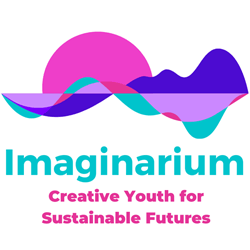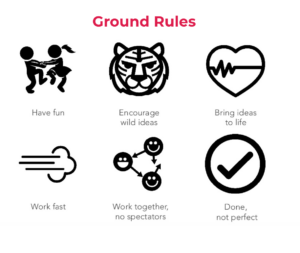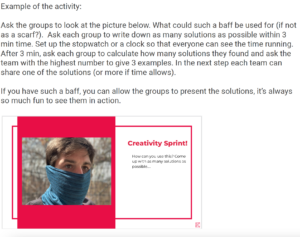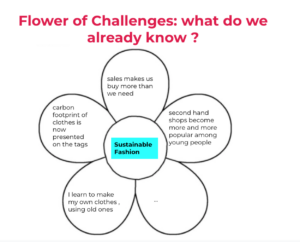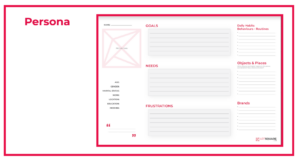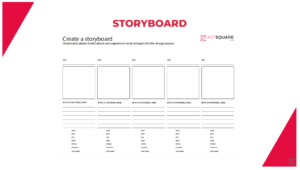- Activity
What is a Thincathon? It is a hackathon without hacking and coding, it is rather about thinking and designing new ideas for their future and the futures of their communities. So maybe you have already discussed with young people their visions for the future and you assumed that it is time to stop talking and start doing! Many dark narratives are being created and even if the situation is for sure dramatic, some young people are feeling overwhelmed and are losing the belief in being able to create change by themselves. In this situation the citizens, entrepreneurs, teachers but especially young people need to be assisted with different ways of thinking where creativity and creative problem solving plays a central role. We need to revive the imagination of young people for inventing positive future scenarios as well as support their creative courage to be able to be the protagonists of the imagined future. How to proceed?
Seetings
1 week Thinkathon is a co-creation program where young people work together on current global challenges and their impact on local communities. The Thinkathon can be part of the summer camp, youth exchange, youth leader training, scout camp, etc.
All you need is a group of motivated youngsters, a collaborative space, a facilitators’ team and program (example below).
The Thinkathon is based on working in small groups of (5-7 people).You can prepare the group division in advance (check the activity we propose in section: Creative Base) or ask young people to choose their peers.
The groups should be seated around the tables, each having a flip chart board at their disposal.
The instructions should be projected on the screen, the head facilitator might use the microphone, clicker and measure the time with the large clock projected on the screen.
This is the suggested program for a 5 days Thinkathon.
Elements of the program are explained below:
| 14.09 | Day 1
Inspiration Day |
Day 2
Research Day |
|
| Breakfast 08:00-09:00 | |||
| Morning
Session |
09:00-11.00
Welcome Session: Presentation of the project, plan of working. Rules, program, tools. Getting to know each other: Sustainability Bingo |
09:00-10.30
Recap of the Day 1 Energizer and intro to the day Sustainable Youth work in Luxembourg: guest speaker from Transition Movement
|
|
| 10.30-13.00
Input: Mapping your community: intro to the guerrilla research and interview Guerilla Research in the local environmental: meeting with organizations, interviews with locals |
|||
| 11.00-12.00
Introduction to the topic of the Thinkathon: Our Sustainable Future – Flower of Expectations Keynote speech of a local activist/researcher on social, environmental, economical challenges in local environment + Wall of Inspiration |
|||
| 12.00-13.00
Introduction to Design Thinking |
|||
| Lunch 13:00-15.00 | |||
| Afternoon
Session |
15:00-16:00
World cafe: What are the biggest challenges connected to sustainability for young people? Exchange in small groups on topics:
|
15:00-17.00
Summary of findings: work with coach on Persona Plenary: summary of the research impressions – sharing with other groups |
|
| 16:00-17:00
Summary of World Cafe Group division for challenges: distribution of Fact Sheets |
17.00–17:30
Coffee break |
||
| 17:00-17:30
Small groups: building mind maps of the problem in local community |
17:30-18:30
Free time |
||
| 17.30-18.00
Closing Ritual |
19.00
Evening activity together E.g. watching the movie |
||
| Dinner 19:00 | |||
| 9.30-11.30
Focus on challenges: formulation of How Might We questions |
11.00-13.00
Prototyping of selected ideas in small groups |
|
| 11.30-13.00
Warm up: Creativity Battle Small groups: Working on the specific challenges in the small groups: ideas generation Sharing ideas with other groups |
||
| Lunch 13.00-15.00 | Lunch 13.00-15.00 | |
| Afternoon
Session |
15:00-16:00
Future is now. Challenges, trends and future thinking- inspirational talk before ideation session
|
15:00- 16.00
Testing the ideas locally Open Event with local community – presentation of the ideas to local organizations or local politicians |
| 16.00-16.30 Coffee break | 16.00-16.30 Coffee Break | |
| 16.30-17.30
Free time |
16.30- 18.00
Iteration on prototypes |
|
| 17.30-18.00
Closing of the day |
19.00 Evening together |
| Day 5 | |
| Morning
Session |
09:00-09:30
Recap of Day 4 Energizer and intro to the day |
| 9.30-10.30
Self reflection. Why is sustainability important for me? |
|
| 10.30-11.00 | |
| 11.00-12.00
Planning next steps of the projects |
|
| Lunch 13.00-15.00 | |
| Afternoon
Session |
15:00-16:00
Debriefing of the Thinkathon Evaluation of the project |
| Celebration Together |
Welcome Session
- Introduce goals
- Introduce team of facilitators
- Introduce the program
- Introduce the rules of collaboration
As Thinkathon should be a mix of thinking and creating, ideally we try to create friendly conditions for team collaboration. It should not be too serious and restrictive, all ideas should be welcomed, people without any expertise should find their place in the process. We suggest therefore the following rules:
Sustainability Bingo:
In order to start the session in a playful way, you can use this template (print A4, one sheet per person) to make participants get to know each other. The task is to find as fast as possible at least 9 different people who can answer positively on 9 Bingo statements. Attention: names should not be repeated (if for example one person fits more than one category)
You can always create your own Bingo, just get inspired!
SUSTAINABILITY BINGO!
|
Find one person who traveled here by train or by using car sharing
|
Find someone who organizes social events in his/her community |
Find someone who is interested in creating an environmental project? |
|
Find a person who is engaged in political life in his community
|
Find a person who signed a petition in his life (what kind of petition?) |
Find someone who can share 3 benefits of social entrepreneurship |
|
Find someone who knows what circular economy is
|
Find someone who has heard about design thinking |
Find someone who concierge him/herself creative |
World cafe:
With the dynamic of the cafeteria (you place a number of tables in the room with 4-5 chairs around) you will invite young people to discuss the topic:
What are the biggest challenges connected to sustainability for young people?
On each table place a big flip chart paper (and 1-2 marlers) with one of the topics mentioned in the middle.
- Socal Challenges
- Environmental Challenges
- Economical Challenges
- Cultural/Heritage Challenges
Let the small group discussion go on for 15 min and after that ask the participants to change the group and repeat the process 4 times (= as many times as topics). Attention: the participants do not change the table together, they might mix with others. In result each person has a chance to visit each table/topic once.
You might suggest other topics, e.g. selected Sustainable Development Goals
Keynote Local Activist/ Researcher
Presentation of key information, environmental chances and social challenges of your local community will help your Thinkathon to be more specific, focused on concrete issues that relate to their life. It will bring more enthusiasm to the whole process.
Remember that the input should be adapted to the user- young person. Ideally it is also inspiring and positive, even if the topics that are mentioned are challenging.
You might invite an activist from the Transition movement (https://transitionnetwork.org/) that might also exist in your area.
Input from researchers: it is beneficial for the Thinkathon to build it on a solid basis of knowledge provided by the experts. You might invite the researchers who specialize in the topics that will be discussed, related to social or environmental issues. If you will do so, make sure that their input is user-friendly (comprehensible and adapted to the audience).
Here we calculate 30 min per input but it depends on the number of topics that you want to tickle during the Thinkathon. With 20 participants you might work with 4 different topics for example (= 4 different researchers)
Wall of inspiration- invite young people to share their main learnings and inspirations from the intro sessions on the previously prepared wall of inspiration. Ask each person to write down on the sticky note with their main observation and share it on the wall. Each person can have a look at the main points raised by other participants.
Warm up game Creativity Battle
Mind map/ flower activity
Example of challenges (based on SDG’s and input from researchers)
- Plastic Pollution – What if we stop the plastic pollution in the oceans in the next 5 years?
- Responsible Consumption and production- What if we could change our food system for more sustainable and with less waste?
- Sustainable cities and communities – What if we could all live in safe, healthy and green communities?
Or Examples of topics based on Fact Sheets:
- Sustainable Fashion
- Food – healthy consumption
- Mobility and smart transport solution in our cities
To warm up each group for the topic, ask them to create a mind map in the form of a flower (ideally using the colorful moderation cards). In the middle they write the topic of their group (e.g. world without plastic; sustainable food system, safe, healthy and green communities). Each person receives one petal- card for him/herself to note down the challenges they connect to the topic and what they already know (e.g. increasing attempts to find a substitute for plastic- new materials, change of habits – multiple use water bottle; etc)
At the end each group can present their work. It is OK if the flower is not complete: in the next step we want to encourage the group to learn more about the topic.
Interviews and personas
In their groups, the participants are asked to obtain more information about the main challenge: they should interview min 3 persons. If your time is limited, the participants can mingle with other groups. If there is more time, they can move outside the building and conduct some interviews “on the street”, in the shops, etc.
It is important that before the interviews the group agrees what kind of questions they will ask – it can be helpful to provide them with a short interview grid template. It will ensure better quality of the information obtained.
Last but not least, it can be helpful to create pairs for this activity: in each pair one person can ask questions and the second person can take notes. They should decide between them what feels more comfortable or who wants to practice curiosity!
After the interviews the participants get back to their groups to share information and debrief other team members. It is important to use analytical skills here to summarize their findings. The template of the Persona/ Empathy map can be useful here to understand for which kind of user we try to solve the challenge.
Ideation session
What could be the new solutions for the challenges?
In small groups, the participants are asked to come up with the ideas with the set of activities:
- Individual ideation sprint: use 4 spaces of the A4 paper to draw/name 4 potential solutions for your idea (5 min)
- Choose the idea that you like the most on your paper and share it with the group (20 min)
- Using 3 dots, vote for the idea that you think has the greatest potential for further development (not the best one:). The selected idea is the one with the largest number of dots.(5 min)
- Together with the team, create 10 different versions of the idea and sketch them on the post-its. At the end choose the best idea together. (15 min)
Prototyping (storyboard and 3D)
The idea selected in the ideation process is taken to another level: together the group needs to divide the idea into sequences and draw it using the template of the storyboard. To create a storyboard the group should imagine how a user of the idea will interact with it (e.g. if the idea is to create a green points at train stations where the passengers can rest, wait and get to know the plants- ask the group to imagine step by step: how the traveler will find the garden? How will s/he learn how to use it? What objects will s/he use there? etc)
Visualization of the idea will make a group members to discuss the details, find compromises, convince each other, prioritize best solutions.
In final point the group can build a 3D prototype with simple materials available during the workshop (paper, pen, glue, old magazines, lego bricks, etc)
As it is difficult to prototype the whole idea, suggest the groups to select one sequence from the storyboard and take it in 3 dimensions e.g. they might choose to prototype the poster, the invitation letter, the signalisation board, etc).
Again, while building they need to discuss and find compromise and maybe even decide on some changes of the idea. This is welcomed!
Testing of the prototypes and feedback
After building the prototypes, ask all groups to clean their working stations and get ready to present the idea to others. The testing session can be done at least in three different ways:
- if you have max 20 people, walk together from station to station: at each station find one “tester” who will interact with the prototype, trying to guess what the idea is about. The group who owns the prototype can afterwards explain what was their international. All the participants can comment and give their opinion. Encourage feedback giving!
- If you have more than 20 people, you can invite the groups for cross-testing: each group can go to give feedback to the partner-group. After they switch. In result both groups have a chance to present/pitch as well as give constructive feedback to each other.
Iteration
Getting feedback allows the groups to improve the prototypes and modify the ideas: give them time to rethink the suggestions and re-build the ideas, modify them.
The Thincathon is a chance for young people to take part in a creative process and learn about their creative competences. They will experience their own creativity as well as the group work that can inspire their ideas about desired future.
Here are examples of debriefing questions:
- Are you satisfied with the final idea that you have build in the group?
- Do you think that the idea is feasible: can be implemented in reality?
- Would you like to be part of building this particular image of the future? What would be your role (spectator or player?)
- Who would be key players to implement that vision: can you imagine to contact them to show them the prototype?
- Have you discovered something new about yourself?
- What was the WOW moment in the whole day?
1 week
1 flip chart board per group with flip chart papers
Markers and pencils x 6 per group
2 decks of post-its per table
Sticky tape (x 1 per table)
Sticky dots (x 1 per table)
A4 paper (x 20 per table)
Set of Templates from Annex
In the project Thinkathon, we are going to introduce creativity using Design Thinking and Futures Thinking methodology. By “teaching” the future, you can engage young people in thinking and projects that motivate them to learn, equip them to face uncertainty and challenge, empower them to envision a preferred future, and develop agency to bring it about. Therefore “futures thinking” competence is becoming a necessity today, and not just an interesting intellectual exercise.
Young people will be ensured that designing the future is, on the one hand, a search for opportunities and potential, and on the other hand, systematic, purposeful and initiating practical solutions, aimed at responding to uncertainty.
Last but not least: Thinkaton is fun!
